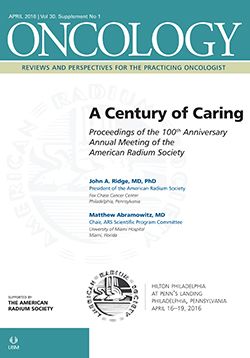(P012) Contralateral Liver Hypertrophy Following Intra-arterial Radioembolization for Liver Tumors
In addition to treating the tumors, radioembolization is a safe procedure with a predictable effect on contralateral liver hypertrophy. At 3 months post-radioembolization, degree of hypertrophy is significant, achieving the necessary threshold for safe liver resection.
Yazan Abuodeh, MD, Arash Naghavi, MD, Kamran A. Ahmed, MD, Sonia Orcutt, MD, Jessica Frakes, MD, Ghassan El-Haddad, MD, Bela Kis, MD, Richard Kim, MD, Nishi Kothari, MD, Sarah Hoffe, MD, Daniel A. Anaya, MD; H. Lee Moffitt Cancer Center and Research Institute
BACKGROUND: Intra-arterial radioembolization (RE) is effective in treating unresectable liver tumors, and clinical observations have brought attention to its ability to induce contralateral hypertrophy. The goal of this study was to evaluate patterns and rates of contralateral liver hypertrophy after RE in a homogeneous group of patients.
METHODS: A retrospective analysis was performed of treatment-naive patients with primary/secondary liver tumors who were undergoing right lobe RE (2010–2014). The left lobe was used as a proxy for future liver remnant (FLR) and standardized FLR ([sFLR] FLR/standardized total liver volume [%]). Volumes were measured using software with liver-specific algorithms at baseline and 1, 3, and 6 months post-RE. FLR, sFLR, degree of hypertrophy ([DH] change in sFLR [%]), and kinetic growth rate (KGR) were calculated for each time interval. Hypertrophy kinetics were compared on the basis of cirrhosis.
RESULTS: Twenty-seven patients met the inclusion criteria; 18 (67%) had hepatocellular carcinoma, 4 (15%) had cholangiocarcinoma, and 5 (19%) had metastatic lesions. Cirrhosis was present in 14 (52%) patients. The median dose of RE was 131 Gy (range: 102–258 Gy). All treatments were performed in the outpatient setting, and no major complications occurred. Median sFLR increased steadily from 33% at baseline to 36%, 40%, and 44% at 1, 3, and 6 months, respectively. Median DH was 3%, 10%, and 12% for the same time intervals, with the highest KGR observed at 1 month and 3 months (0.6%/week [range: 0.01%–1.4%]). At 3 months, 78% of patients had a DH ≥ 5%. KGR was higher for patients with noncirrhotic livers, although no statistical differences were observed (P > .05).
CONCLUSIONS: In addition to treating the tumors, RE is a safe procedure with a predictable effect on contralateral liver hypertrophy. At 3 months post-RE, DH is significant, achieving the necessary threshold for safe liver resection. Further investigation is needed to clarify the safety and efficacy of RE as a neoadjuvant treatment for patients requiring liver hypertrophy prior to major hepatectomy.
Proceedings of the 98th Annual Meeting of the American Radium Society - americanradiumsociety.org
